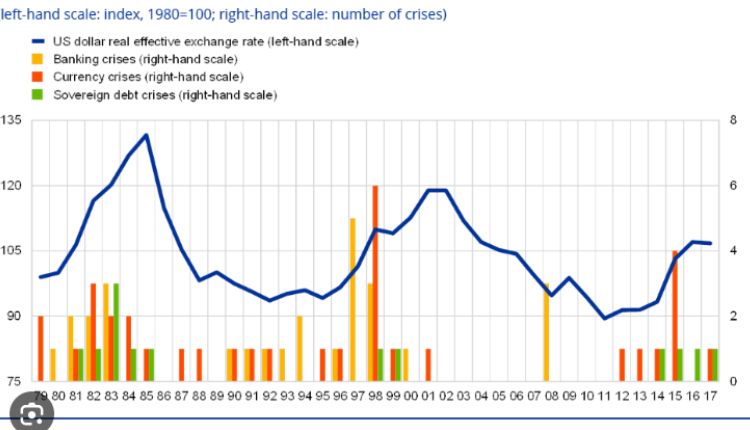Table of Contents
Introduction
The US Dollar Index (USDX) is a widely recognized benchmark that measures the value of the United States dollar relative to a basket of other major currencies. Tracked by traders, investors, and economists around the world, the USDX plays a crucial role in global financial markets. This article explores the importance of the US Dollar Index, its methodology, and the impact it has on various sectors. By delving into the significance of this index, we can gain a better understanding of its influence on international trade, investment decisions, and economic stability.
Section 1: The US Dollar Index Explained
The US Dollar Index, also known as DXY, was introduced in 1973 by the Intercontinental Exchange (ICE). Its purpose is to provide a comprehensive measure of the value of the US dollar against a basket of six major currencies: the euro, Japanese yen, British pound sterling, Canadian dollar, Swedish krona, and Swiss franc. These currencies are weighted in the index based on their importance in US trade.
The USDX is calculated using a formula that takes into account exchange rates and the relative importance of each currency in US trade. The index is expressed as a weighted geometric mean, where the currencies with higher trade volumes have a larger impact on the index’s value. As a result, the USDX provides a snapshot of the overall strength or weakness of the US dollar against its major trading partners.
Section 2: Significance Of The US Dollar Index
The USDX holds significant importance in global markets for several reasons. Firstly, it serves as a reliable indicator of the US dollar’s performance. As the world’s primary reserve currency, the US dollar plays a crucial role in international trade and finance. The USDX allows investors, central banks, and policymakers to gauge the dollar’s value and assess its impact on their respective economies.
Secondly, the USDX affects global trade and competitiveness. A stronger US dollar, as indicated by a higher index value, can make US exports more expensive and imports cheaper. This can impact the competitiveness of US businesses in international markets and have implications for trade balances and economic growth.
Furthermore, the USDX influences capital flows and investment decisions. Investors often use the USDX as a guide to assess the attractiveness of US assets compared to other countries. A rising USDX can attract foreign investment as it indicates a stronger dollar and potentially higher returns. Conversely, a declining USDX may lead to capital outflows and impact financial markets worldwide.
Section 3: Impact On Different Sectors
The US Dollar Index has a significant impact on various sectors, including commodities, stocks, and emerging markets. Commodities such as gold, oil, and metals are typically priced in US dollars. As a result, changes in the USDX can directly affect their prices. For instance, a stronger US dollar tends to put downward pressure on commodity prices, making them more expensive for buyers using other currencies.
In the stock market, the USDX can influence investor sentiment and performance. A strong dollar may negatively affect US multinational companies that rely heavily on exports, as it makes their products relatively more expensive in foreign markets. Conversely, a weak dollar can benefit these companies by boosting their competitiveness abroad.
Emerging markets are particularly sensitive to fluctuations in the USDX. Many countries have borrowed in US dollars, and a stronger dollar can increase the burden of debt repayment, leading to financial instability. Additionally, a rising USDX can attract capital away from emerging markets, causing currency depreciation and capital outflows.
Conclusion
The US Dollar Index plays a vital role in global financial markets, providing insights into the strength and performance of the US dollar. Its impact extends beyond currency markets, influencing international trade, investment decisions, and various sectors. Understanding the USDX allows market participants to make informed decisions and manage risks associated with currency fluctuations. As the global economic landscape continues to evolve, monitoring the US Dollar Index remains crucial for governments, central banks, investors, and businesses worldwide.
FAQs:
- How often is the US Dollar Index calculated? The US Dollar Index is calculated in real-time and updated every 15 seconds during market hours. It reflects the latest exchange rates of the currencies in its basket.
- Can the US Dollar Index be used to predict future exchange rates? While the US Dollar Index provides valuable information about the performance of the US dollar, it does not directly predict future exchange rates. Exchange rates are influenced by numerous factors, including economic indicators, geopolitical events, and market sentiment. The USDX serves as a tool for assessing the relative strength of the US dollar against a basket of currencies but should not be solely relied upon for predicting future exchange rate movements.
